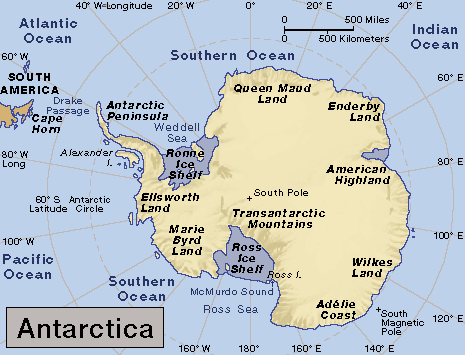Life Found Under Antarctic Glacier
February 19, 2013
Scientists announced this week that for the first time they had found living bacteria beneath a glacier in Antarctica. A team of scientists from the Whillans Ice Stream Subglacial Access Research Drilling (WISSARD), funded by the U.S. National Science Foundation, made the find. The bacteria were discovered in Lake Whillans, which is about one-half mile (800 meters) below the West Antarctic Ice Sheet. The lake is about 5-feet (1.5-meters) deep, and scientists had to drill through the entire half mile of ice to take a sample of the lake water. After running a culture of the sample, they were able to see the bacteria under a microscope. The bacteria are members of a new ecosystem of living things that is able to survive with little light, at very cold temperatures, and under large amounts of pressure.

Lake Whillans sits at the upper tip of the Ross Ice Shelf in West Antarctica. (World Book map; map data © MapQuest.com, Inc.)
DNA testing is required for scientists to be able to identify the bacteria. Once identification has occurred, it might give scientists a better idea of what the bacteria use as food.
In addition to the excitement of finding life under Antarctic ice, scientists were also very interested in the bacteria because the conditions in Lake Whillan are not unlike some of the terrains found in outer space. For example, Jupiter’s moon, Europa, and Saturn’s moon, Enceladus, both have water that exists under ice. If the bacteria discovered under Antarctica is, for example, found to consume minerals from surrounding rock as food, a similar lifeform might be able to exist elsewhere in the solar system.
Additional World Book articles:


